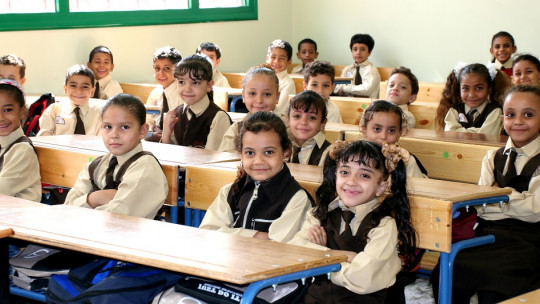
Preventing gender violence at school works; This is the conclusion of a study published in 2021 by the Ministry of Education, carried out with the objective of knowing the influence of the school in the eradication of gender violence.
Young people who work and deal with these issues in classrooms reduce their risks of experiencing, suffering or causing gender violence. Sexism is something that is learned from childhood; a set of systematic beliefs that have been imposed in our society to perpetuate everything generated by previous generations. Luckily, we are born with great plasticity, being able to adapt new knowledge to it and modify previous behaviors.
Education on gender violence must be incorporated to learn to identify and prevent it In this article we are going to talk about the importance of incorporating these topics into school classrooms to avoid the perpetuation of these attitudes among the youngest.
What is gender violence?
First of all, although it is a widely generalized concept, it is worth reviewing what gender violence is. It is one of the clearest manifestations of inequality, subordination and power relations over women Gender violence is that which is exercised against women by men with whom an emotional relationship has been established.
The aggressor’s objective is to harm and gain control over the woman. It occurs continuously over time and systematically in its form, as part of a predefined strategy to prioritize harm to the victim and their social isolation.
Education as a socialization process
Education is considered part of the socialization process that will go beyond the limits of academic institutions. Many learning experiences are everyday and occur outside of a formal framework, but Schools and institutes provide a privileged space to prevent issues such as gender violence Reviewing the cultural and historical construction of gender roles and the characteristic behaviors associated with them, differences have been established between the sexes that have generated power relations between men and women, giving girls and women the place of subordination and discrimination. However, the masculine has been associated with strength and even violence.
It is important to consider the differentiation between these roles to understand that the eradication of the maintenance of these beliefs must entail a multidisciplinary response, with education and educational institutions as protagonists. Through education, beliefs can be changed and not all families can provide their sons and daughters with a comprehensive education on gender and violence issues.
Topics to be addressed in the prevention of gender violence in education
Through education on gender violence in schools and academic institutions, many and varied topics can be addressed. We propose a series of interesting topics to introduce in relation to gender violence and child or adolescent development.
1. Response to gender demands and expectations
As previously mentioned, during our sexual and gender development we internalize beliefs socially associated with gender. Thus, Boys and girls are educated to respond to social demands and expectations associated with these roles
It is important to address these issues in the classroom to avoid the internalization of roles associated with gender violence by women and to make children understand that they should not develop beliefs that victimize girls. For example, submission is an attitude commonly associated with the female gender and is very importantly related to gender violence. If the relevance of this association is explained from childhood, its appearance can be prevented and knowledge generated that distances boys and girls from these beliefs.
2. Hidden violence
Many times, conflictive and violent situations can go unnoticed by teaching teams and fawning people. Therefore, talking about violence and gender at school can help make these situations visible among students who may feel inhibited from talking about these topics
Many boys and girls may also be experiencing situations of gender violence in their homes, but may not be aware of the problem that this can represent. Therefore, providing tools to talk about the issue and ask for help is vital not only for their development, but also for their survival.
3. Before it’s too late
Neural plasticity, or the ability to adapt new knowledge to our cognition, is notably higher in the earliest stages of development. Therefore, educating about diversity and gender violence is very important to prevent the appearance of these attitudes or beliefs. Once these types of thoughts or even real situations have appeared, it is more complicated to deconstruct them, and education can arrive late.
Education on gender violence in schools should be based on offering resources that help raise awareness of the problem, provide coping and conflict resolution strategies, and establish ways to establish healthy relationships that are free from violence.








